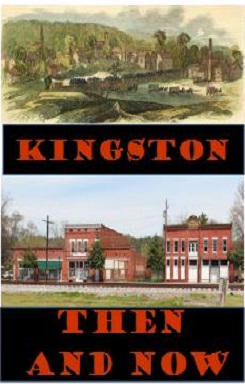The Great Revival in the Confederate Army
"Oh for a revival throughout the Confederacy!" exclaimed the editor of the Macon (GA) Daily Telegraph in 1862. Men and women throughout the south prayed, and revival came to Johnston's army in the days and months preceding the battles around Atlanta.
The great harvest came at a time of great trial for the Confederate soldier. The hope for quick victory, indeed victory of any sort, was dashed with the defeats of Gettysburg and Vicksburg. The Confederate soldiers dealt with the atrocities of a modern war fought with Napoleonic tactics. Friends and messmates were torn to bits right next to each other. Soldiers faced down cannon, rifled muskets, and bayonets across open field charges. Men could be killed by gunfire or by disease.
John William Jones related how he arrived to a Mississippi brigade in the rain to the sound "of psalms and singing." The men of the brigade asked Jones for a sermon, and when the reverend protested due to the weather, reminded him: "We do all other military duty in any weather that comes, and we cannot see why we should allow the weather to interrupt our religious privileges."
Throughout the fall and winter of 1863, newspapers, letters, and testimonials spread throughout the south about the effects of revival in the army. Chaplains wrote in amazement about the lack of dice and card-playing in the camps, and how swearing, which had once been common, was seldom heard in the ranks. Report after report in the papers indicates that thousands of soldiers had committed to Christ by 1863, and their conversion was genuine.[1]
On the night of May 17, 1864, in a tent near Cassville, Georgia, Confederate General Joseph E. Johnston, the commander of the Army of Tennessee, was baptized. Leading up to this event, Johnston’s wife, Lydia, had written to General Leonidas Polk about her husband’s spiritual salvation: “[I]t is the dearest wish of my heart that [Johnston] should be [baptized] and that you should perform the ceremony. General Leonidas Polk performed the ceremony as the army was camped ouside Cassville. Dr.Quintard, chaplain of the 1st Tennessee Infantry wrote in his memoirs that Polk also baptized Generals Hood and Hardee. He also wrote that Polk was killed at Pine Mountain while on a mission to deliver Bibles and devotional books to the generals and that these books were found on his person when he was killed.
Writing after the war, S. A. Cunningham in the Confederate Veteran stated that at no time had an army cultivated a religious character like Joseph Johnston's Army of Tennessee.[3]
[1] https://www.acton.org/pub/religion-liberty/volume-21-number-3/great-harvest-revival-confederate-army-during-civi
[2] https://kennesawmountain.wordpress.com/2014/05/17/may-17-1864/
[3] S. A. Cunningham, "Religion in the Southern Army," Confederate Veteran 1/1 (January 1893):15; OR, ser. 1, vol. 38, pt.4, p. 776.
While the Civil War was a great harvest of death and destruction, it also brought a harvest of souls to the church. Prior to the American Revolution, New England had been the "Bible Belt" of America, while church attendance in the South was scant. The Second Great Awakening culminated by the revival in the Confederate Army shifted the culture of Dixie, and America as a whole.
The revival led to a homogenization of the southern religious experience. The North went the opposite direction. The 19th century saw Puritanism secularize into transcendentalism and abolitionist politics. Northern society became a melting pot particularly with the post war immigration of the Catholics from Ireland and Italy, and the Lutherans from Germany, while the South became more unified in its Christian culture.
The revivals took hold in the "backcountry" amongst the families who survived the war. Southern evangelism reflected the charismatic and independent character of the Appalachian farmers. While planters dominated politics and business, humbler folk shaped the culture of Southern Faith. Many of the men who survived the war continued to lead churches and revivals themselves after the guns were finally silenced.
The revival that was sparked here in Bartow county saw its fruition in the ministries of
Sam Jones and
Lottie Moon. Perhaps no two individuals have impacted the Church in the 20th and 21st Centuries more than these two individuals and they both trace their spiritual roots to Rev. Felton and his wife, Rebecca Latimer Felton.
Martha Berry also traced her spiritual roots to the influence she received at Rev. Howard's school at Spring Bank.
Kingston Then and Now
Spring Bank
The Great Locomotive Chase
The Kingston Saltpeter Cave
The Beginnings of Memorial Day
Hooker's Girls
Sherman's Army
Johnston's Army
The Great Revival in the Confederate Army
Lottie Moon (Charlotte Diggs Moon)
Sam Jones
Bill Arp (Charles Henry Smith)
William Earp (The real Bill Arp)
______________________________


Kingston Then and Now
Rigdon, John C.
158 pgs.
HARDBACK - $40.00
PAPERBACK - $20.00
DVD - $15.00
COMBO - $30.00
EBOOK - $15.00
 Country Life in Georgia in the Days of my Youth
Country Life in Georgia in the Days of my Youth In and Out of the Lines
In and Out of the Lines

 We Fought At Kennesaw
We Fought At Kennesaw
